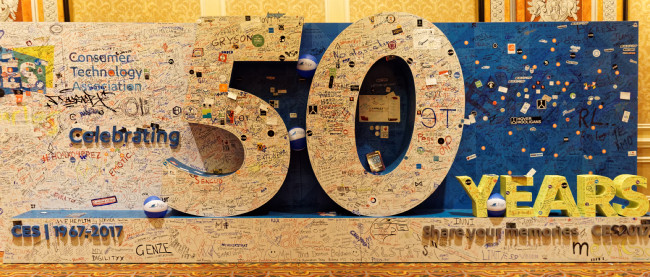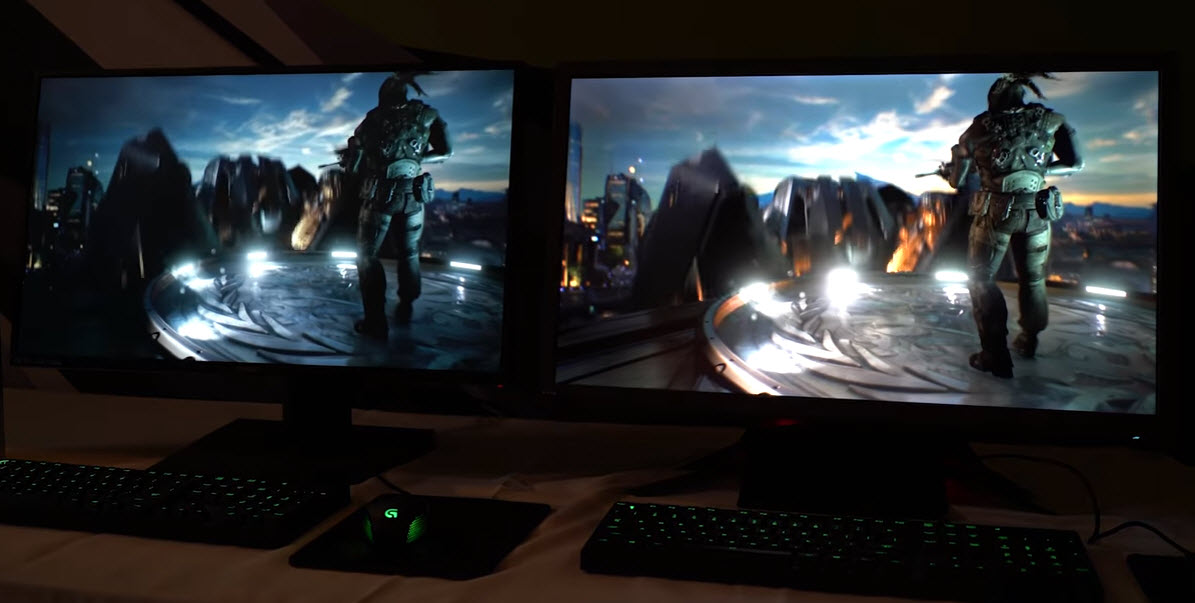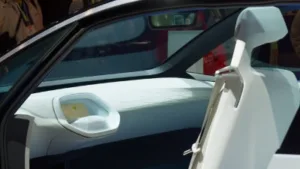This is an unusual week – a gap between the family overload of Christmas and New Year and the technology overload that is CES. This year, there is a brief gap, which gives us a chance to catch our breath and look ahead to next week and think about what might be presented.

In planning, it was immediately clear that this year there are fewer display-related companies than last year on the show floor, although many will still be in Las Vegas, but in hotel suites.
 Lasxt year’s CES celebrated 50 Years of the Event
Lasxt year’s CES celebrated 50 Years of the Event
TV is the Big Topic
CES is a special event for the TV set industry because of the timing in the annual cycle, so there is always a lot to see. 2017 was the year of OLED in TV, as we have reported and I expect to see some more adoption of OLED technology by new brands at CES as LG will be increasing the supply of OLEDs for TVs in 2018. However, the big news is that LG Display is planning to show an 88″ OLED with 8K resolution. That’s quite an achievement as is extraordinarily difficult to increase the resolution of OLEDs. At the moment, LGD hasn’t said when it might be commercialised, but even to make one is very impressive.
The other thing I’m looking forward to is the reaction of Samsung to OLED’s success in the premium segment. I’m expecting to see at least three technology moves that will help LCD to fight back against OLED. First, we’ll see some demonstrations of ‘quantum dots in the filter’ (Beginning of the End for the Color Matrix Filter?). We’ve been talking about that technology since SID in 2016, but this may be the first time that Samsung may show it. It should solve the viewing angle challenge for LCD as well as enabling wide colour gamut and HDR without the need for huge power consumption.
Second, we expect to see some sets with quantum dots on glass (QDoG), which I recently wrote about (Will QDOG Have its Day?). That should help LCD to meet the challenge from the very thin form factor of OLEDs.
 Schematic of Quantum Dot on Glass (QDOG) Source:DSCC
Schematic of Quantum Dot on Glass (QDOG) Source:DSCC
Samsung is bound to show 8K LCDs, as well. As I have written before, 8K is easier for LCD than for OLED, so it will happen, whether it is logical for most viewers or not. All the companies involved in LCD making are planning or have developed 8K panels and chip makers are developing the supporting technology.
It also seems that Samsung will show something for TV using LED. Samsung has been showing the use of small pitch LEDs in TV-like applications for some time and surprised the cinema industry in 2017 by introducing LED Cinema (My First Movie on an LED Cinema Screen). It showed a ‘modular’ TV that could change its configuration several years ago and we are pretty certain that this used LED (Samsung never officially confirmed this, as far as I know). There have been reports that Samsung will show a 150″ LED TV with UltraHD resolution, but that would mean around a 0.85mm pitch, which is around the state of the art in terms of current LED technology. That’s difficult but not revolutionary. A smaller diagonal would be more of a revolution and would add weight to the rumours that Samsung is looking hard at microLED.
Automotive is the Big Growing Segment at CES
Neither CES nor IFA could have continued their expansion by staying just with consumer electronics. While IFA went for home appliances in a big way, CES has gone for automotive and that segment has become more and more important. We’ll have two people writing about the segment for our full report for subscribers. We’re hoping that we will see some of the concepts that were evident at the Tokyo Motor Show, when wide and large displays were widely displayed.
 This concept was shown at CES 2017 – Image:Meko
This concept was shown at CES 2017 – Image:Meko
Because it is so close to the big smartphone event that is the Mobile World Congress, we don’t expect to see much that is really new in smartphones, although there will be some new models from big brands and, probably, some innovation from new brands from China that are looking to ‘test the water’ with potential customers and partners in the US. Of course, it would be great to see a real product that exploits the flexible OLEDs that have been shown privately at CES for several years.
HDR To Feature for Monitors
The likely focus in IT will be in gaming. Curved and HDR monitors are likely to be the most exciting. Last year, some samples of HDR sets were shown, but delays in shipping panels meant that the best didn’t come to market in 2017. The new VESA HDR 400, HDR 600 and HDR 1000 specifications will be widely promoted. (VESA Releases Open Standard and Test Methodology for HDR in Monitors and Laptops – Subscription required) There may be one or two more 8K monitors and even some OLED notebooks, although makers have been disappointed that lack of supply of the panels has meant that market penetration has not gone according to plan.
 This HDR Monitor was shown last year, but didn’t come to market in 2017. Image:Meko
This HDR Monitor was shown last year, but didn’t come to market in 2017. Image:Meko
Projection will largely be off the show floor and in suites, where lighting for home cinema applications can be better controlled. We don’t expect to see anything dramatic, but there are bound to be some attractive displays now that UltraHD and laser phosphor are getting more accessible. LG and Sony usually have some interesting developments in the main show and Panasonic has shown some interesting B2B applications in the past.
So what about VR and AR? I’m expecting to see a lot of small start-ups and technology companies, but many of the headset suppliers that have attended in recent years will not be there because the current markets, especially in A/R, are currently in B2B applications, so attending CES is not likely to be a profitable investment. Somebody may have something surprising, but as we go into the show, I’m not expecting to see a lot. It would be great to see something from Magic Leap, but I don’t expect it.
Finally, the show is a great way to catch up with technology groups and standards organisations as well as the supply chain. We’ll meet with the organisations behind VESA, HDMI, USB, HDBaseT and the various wireless technologies as well as the chip and panel suppliers. Bob Raikes

